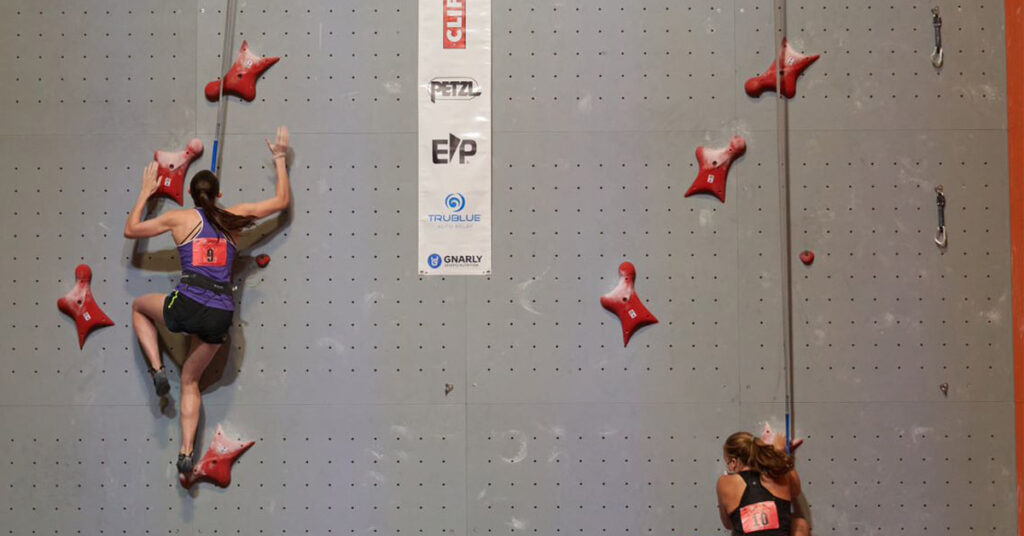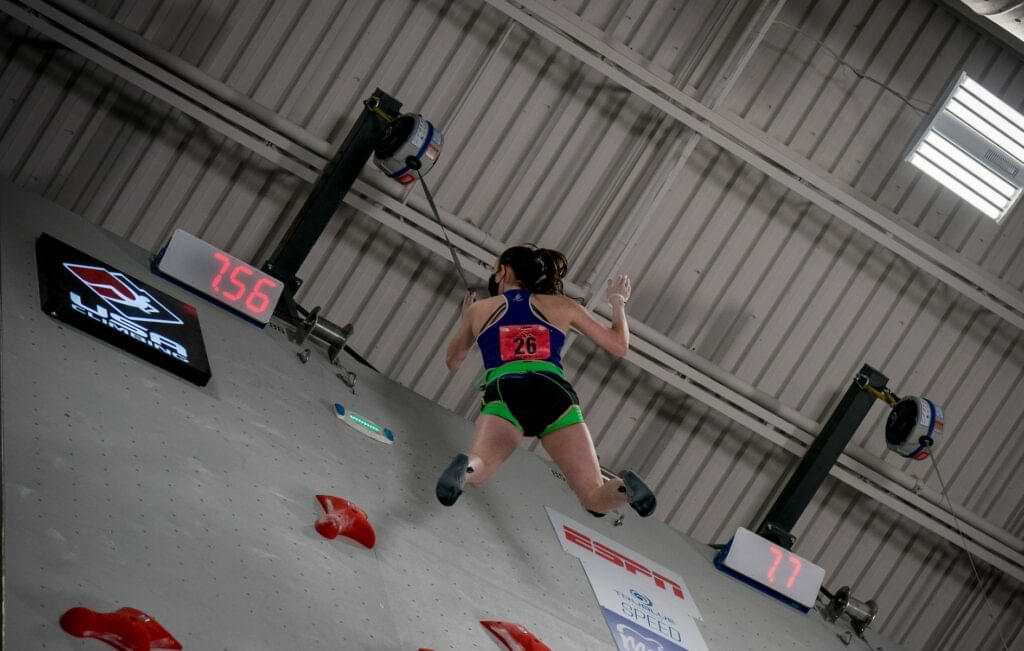For kids, learning to climb takes on a different meaning than it does for teens or adults. The benefits of climbing for child development are well documented. Climbing helps kids to improve their creative problem-solving skills, spatial awareness, coordination, strength, endurance, and flexibility, while also reducing stress, building confidence, and encouraging cooperation with others.
Of course, that’s thinking about the issue from the perspective of a grown up.
“Kids don’t care that following a particular sequence of holds teaches them valuable life skills like pattern recognition and memorization. They do it because it’s fun.”
They do it because they like it and they want to play. And where can you possibly find a bigger playground than in a climbing gym?
“Play is essential to development because it contributes to the cognitive, physical, social, and emotional well-being of children and youth. Play also offers an ideal opportunity for parents to engage fully with their children,” writes Dr. Kenneth R. Ginsburg in an article published by the American Academy of Pediatrics.
Dr. Ginsburg goes on to say that adults can participate and even add to the benefits of play, though they have to walk a careful line between being a part of the game and taking it over.
“Ideally, much of play involves adults, but when play is controlled by adults, children acquiesce to adult rules and concerns and lose some of the benefits play offers them, particularly in developing creativity, leadership, and group skills.”— Dr. Kenneth Ginsburg
Which got me thinking: as members of the climbing industry, what strategies can we implement to help instill a lifelong love of climbing, while still allowing kids to get the full benefits and desired development out of their playtime?
How Climbing Games Can Teach Kids New Skills
Whether bouldering, top roping, or climbing on auto belay, the important thing when teaching kids how to climb isn’t following the standard protocol of making it to the top so much as having fun along the way.
“Since young kids are at such a formative period in their mental development, the wrong introduction to climbing can mean a lifelong hatred of the sport, while positive coaching can promote a lifetime passion.”
That is according to parent and climbing coach Ari Schneider in his excellent article, Coaching Kids – 7 Ways 7 Year Olds Learn to Climb.
One of the key takeaways from Schneider’s article is the importance of teaching climbing through the lens of having fun and playing games. More than anything else – more than making it to the top or sticking to a specific route or even developing proper form – fun is the primary objective. All of those other wonderful benefits of teaching kids to climb are still present, but they come secondary and naturally. The main thing is just to spend time climbing.
Like filling celery sticks with peanut butter or smuggling bits of broccoli into mac and cheese, focusing on the fun side of climbing gives kids all the health benefits that parents want in a form that encourages kids to ask for more.
Building Confidence with Bouldering Games
Since they are free to move around and wander off route with limited consequences, the bouldering area is a great place for kids to learn how to play popular climbing games like Add-On or Simon Says (basically just the regular game, but on a climbing wall).
Traversing is an excellent warm up activity or a good starting point for any kids who might be apprehensive about getting too far off the ground. And, as anyone who has spent any amount of time around small kids will also tell you, having a heavily padded floor beneath you is never a bad idea.
Giving Parents a Chance to Play
On the high walls, auto belays can offer a fun way for parents to join their kids in the game. One of the great things about auto belays (as pointed out to us by none other than Chris Sharma) is that parents can climb side-by-side with their kids.
“I can actually be right next to her,” Sharma said about being able to climb with his daughter. “It’s really cool, that really opens up new possibilities for new interactions.”
In an interview with the CWA, John Hur, the General Manager of Macon Rocks in Georgia, reported a similar experience in his own facility.
“Half of our wall terrain is built with auto belays,” Hur said. “This allows families who are brand new to the sport to climb alongside each other. So, it’s not unusual to have a five to seven-year-old climbing alongside his mother or dad one lane over. So, it just allows a really close experience with families and others to start coming in together.”
Gym operators and route setters can help to facilitate this activity by making a couple of simple adjustments:
- Create a section of the gym that’s specifically for auto belays. Having a separate auto belay area also brings the added benefit of being easily monitored by a member of the staff for any safety concerns. If you don’t have room for an entire section, space your existing auto belays near enough to each other that climbers can climb side-by-side.
- Set a couple of routes beneath the auto belays that don’t have any long reaches. Kids are great climbers. Unfortunately, what they have in strength-to-weight ratio, they sacrifice in arm length.
For more suggestions about climbing games that you can play with your tiny crushers, check out Mirjam Boss’s article Rock Climbing Games for Kids.




Leave a Reply